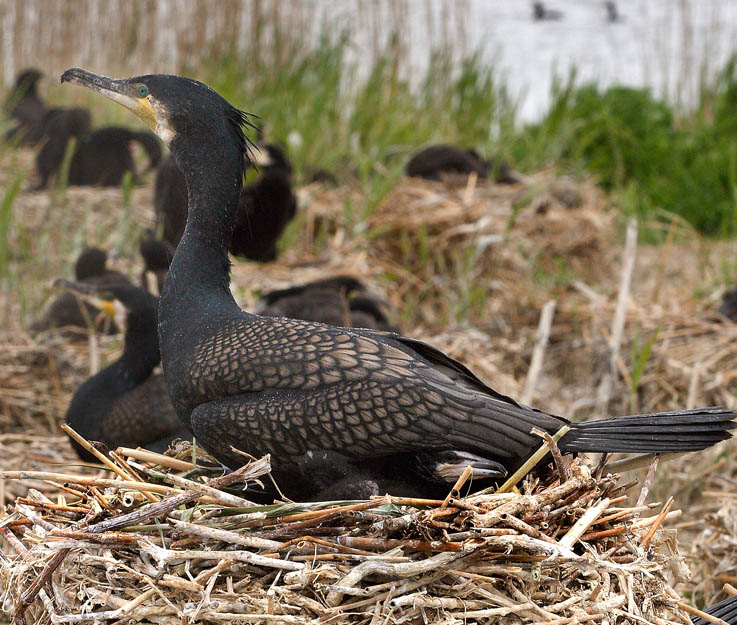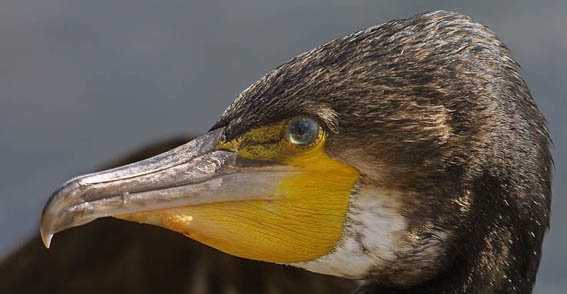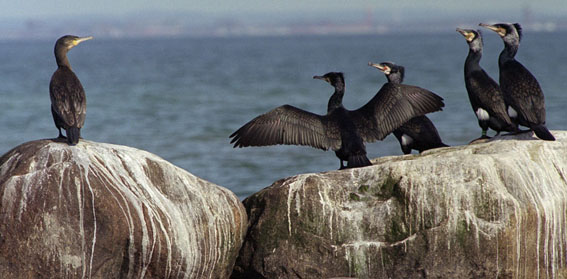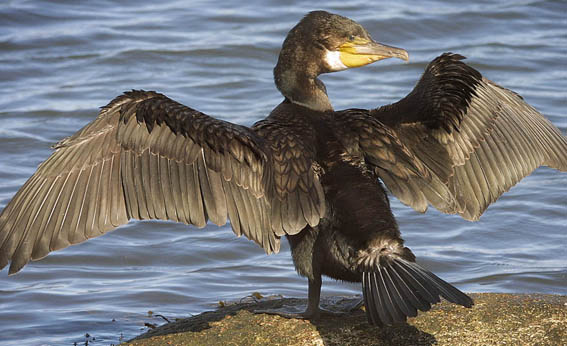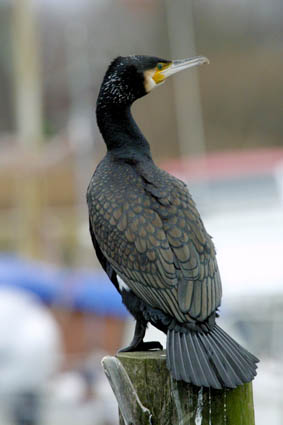|
The Story of the Cormorants is the story of a
creature that actually survived the Danish welfare society.
Spectacular indeed, and not only survived, but also outgrowing it, a
booming success, growing from total extinction in 1930ties to these
days 39.720 couples. And this is not just another funny way to put
it. It’s an actual fact.
The fact is, that Cormorants seams to adjust amazingly well to
civilization and it’s industrialized country side, adjust to it, a
lot better anyway, than so many other species.
Here’s no mentioning of lack of natural food. No worrying of
emissions of ammonia, nitrate or methane. Nothing like the so often
heard depressing news of draw backs, every year bringing a new story
of a bird-species’ fatal decreasing population.
No, the story of the developing Cormorant population is different.
In fact everybody’s minds seams to be focused on when the growing
will stop.. When will it end.
Which is the same as, what level of population fits the availability
of food and breeding sites. And it seams to level out on these
aproc. 40.000 pairs.
Having stayed so now for half a decade or so.
But that is not the full story. Society has found it’s ways to fight
back this pre historical monsterbird. |
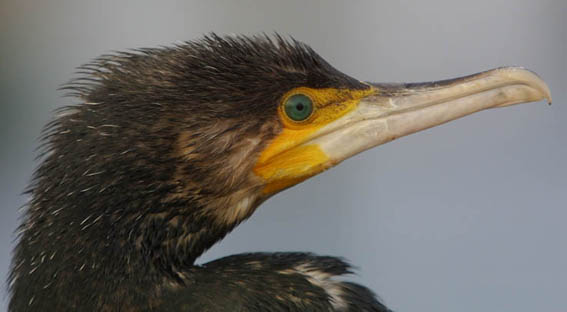 |

